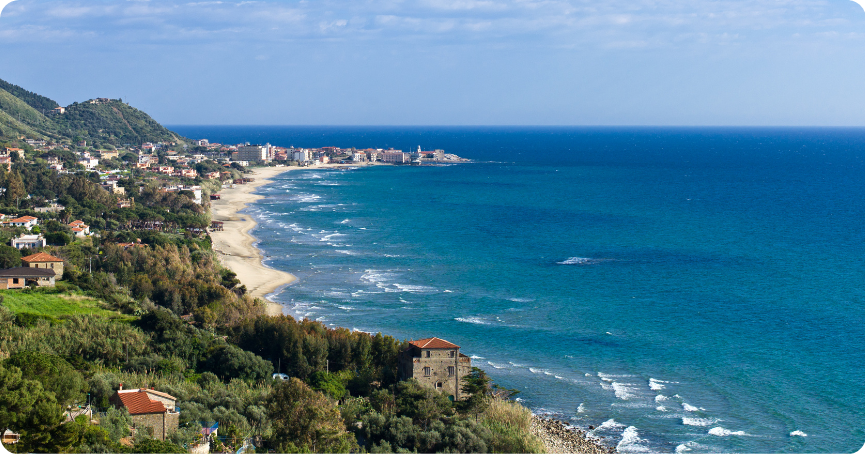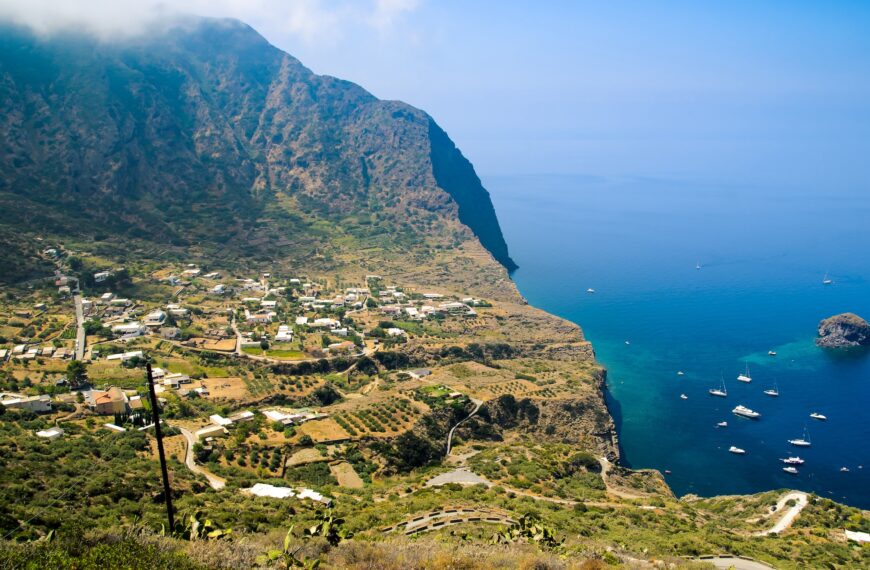Starting from Salerno opens the door to discovering stunning locations. Previously, we explored the Amalfi Coast, traveling north to Positano. This time, we head south along the Cilento Coast, a treasure trove of natural beauty, historical landmarks, and artistic marvels. Among the first must-see stops, we highlight four gems: Paestum, Agropoli, Acciaroli, and Palinuro.
Paestum
The first unmissable site is Paestum, a journey back in time. Located in the municipality of Capaccio, Paestum was already renowned by the 6th century BCE. Known as Poseidonia in honor of Poseidon, it was a key commercial center in Magna Graecia. Later conquered by the Lucanians and then the Romans, it adopted its current name under Roman rule. Declared a UNESCO World Heritage Site in 1998, together with the Cilento National Park, Paestum is home to some of the best-preserved classical structures in the region. Highlights include the Temples of Athena, Hera, and Neptune, the Paleo-Christian Basilica, the Roman Amphitheater, and the remnants of the ancient settlement. The site spans about 120 hectares, enclosed by some of the best-preserved defensive walls of Magna Graecia. The National Museum of Paestum offers a comprehensive journey through the site’s history, from prehistory to the Roman era.
Agropoli
A short distance from Paestum lies Agropoli, an ideal base for excursions to archaeological sites and beautiful coastal locations such as Punta Tresino and San Marco di Castellabate, a quaint medieval fishing village. In the town itself, you can enjoy the amenities of the port, including water, electricity, and fuel. A visit to Agropoli’s historic center is a must. Located on a hill overlooking the sea, the name “Agropoli” derives from the Greek “acropolis,” meaning “high city.” The historic district is accessed via the Salita degli Scaloni (Stairway Ascent) and the 17th-century Monumental Gate. Once inside, you’ll find stone staircases, narrow alleys, and breathtaking sea views.
Dominating the town is the iconic Angevin-Aragonese Castle, which once served as a fortress and military outpost and now hosts cultural events and outdoor performances. Along the coast, you’ll spot ancient watchtowers like the circular San Marco Tower, located between the Castle and Paestum Tower, and the San Francesco Tower perched above the sea, near the remains of a Franciscan monastery. For lively experiences, stroll the Lungomare San Marco, one of the city’s busiest areas, with access to its namesake beach. For tranquility, head to the secluded San Francesco Bay, a rocky beach perfect for relaxation.
Acciaroli
Known as the “Pearl of Cilento” for its crystal-clear waters and stunning beaches, Acciaroli is more than just a practical port for refueling. This charming village in the municipality of Pollica offers a medieval charm, beautiful beaches, and breathtaking views. The main beach, Spiaggia Grande, is located at the foot of the village and features both equipped and free-access areas. For a quieter experience, opt for the pebble beaches such as Torre Caléo Beach, known for its clear waters and accessible only via a small path.
History enthusiasts can explore the Church of the Annunciation, believed to date back to the 12th century and one of the town’s oldest buildings, as well as the remains of the Norman Tower. Built during the same period by Frederick II, the tower was part of a defensive system along the coast to prevent pirate raids.
Palinuro
Our final (but by no means last) stop is Palinuro, famous for its beaches and stunning caves. Located north of Cape Palinuro and part of the town of Centola, it also hosts a port for travelers. For sunbathing and swimming, visitors can choose from a variety of gorgeous beaches. Options include Buon Dormire Beach, tranquil and reachable only by sea; Marinella Beach, surrounded by greenery with sandy seabeds perfect for snorkeling; and the renowned Arco Naturale Beach, near the Mingardo River estuary outside the town center.
Palinuro’s caves are a must-see for diving enthusiasts. The most popular are the Blue Grotto, the Blood Grotto, and the Monks’ Grotto. Finally, trekking lovers will find plenty to explore on Cape Palinuro, where trails wind through lush greenery and offer panoramic views of the deep blue sea.





